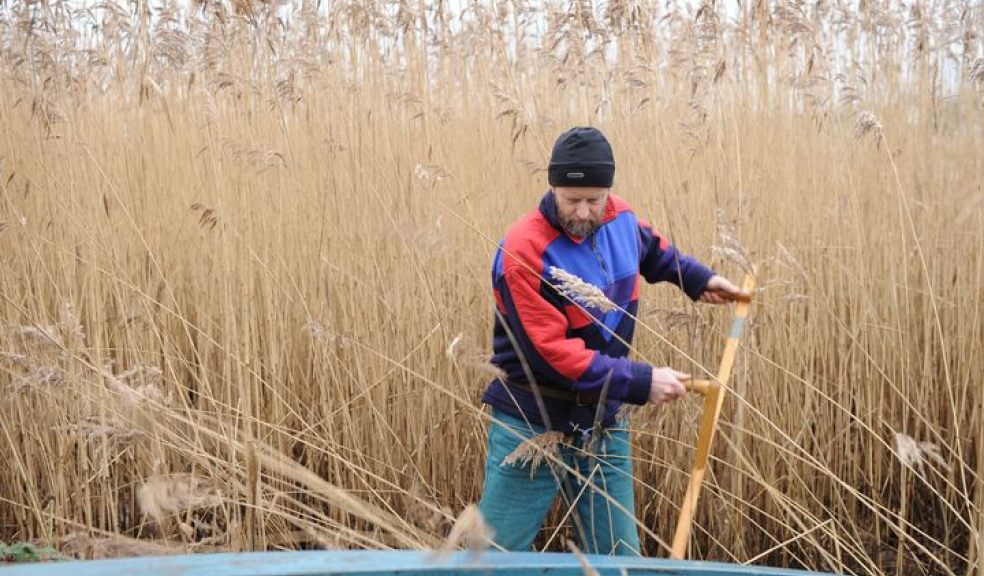
Reed Revival on the Exe
The first water reed to be harvested in Devon in 25 years has been cut by scythe on reed beds opposite Topsham on the Exe estuary. Scythe practitioner, Chris Riley spent a labour intensive week harvesting just over an acre of water reed, which can reach up to 10ft high. “Water reed is an untapped resource, because of its inaccessibility and the manual labour involved in cutting it.”
Chris encourages the resurgence of scythe use: “It’s so important to keep rural skills alive and there aren’t many people with the skill and energy to harvest large areas of reed with a scythe.” For Chris, 55, the scythe is the epitome of hand tools: “it’s efficient in work, poetic in motion, and a metaphor for sustainability.”
Chris teaches this traditional skill across the Westcountry and he explains why scythe cutting is the ideal method. “The scythe is portable, and this site has no land access for big machinery. Also, a scythe produces a clean, straight cut through the reed stem, whereas a spinning motorised blade would weaken the reed and make it less suitable for thatching.”
President of the National Society of Master Thatchers, Mick Dray was commissioned to find the water reed for use on the roof of an eco-house in the South Hams. Mick, a fourth generation master thatcher, remembers using Exe water reed on a roof in Ide 25 years ago and his grandfather thatched with Slapton Ley water reed. “There’s absolutely no reason why water reed can’t be used exactly like wheat straw for thatched roofs,” says Mick who believes this harvest could pioneer the re-growing of Devon water reed as a thatching material. “Once it has dried out, the wigwams of water reed will make perfectly good thatching reed, and it’s a very saleable product.”
The sudden demand for harvested water reed has been generated by Link House, a pioneering eco-home project in the South Hams. “Everything for Link House including the thatched roof materials will be sourced as locally as possible, so the carbon footprint of Link House will be brilliant,” says Mick. “It’s a fascinating project which will employ as many traditional rural craftsmen as possible, including scythe cutters and master thatchers.”
A proportion of the reed has been hand-tied into bundles and stored, whilst the remaining area will be cleared to encourage fresh regrowth. New reeds will grow to full height by next winter, when a full harvest of the 8-acre reed bed is planned, in readiness for the first water reed roof in Devon in quarter of a century.















